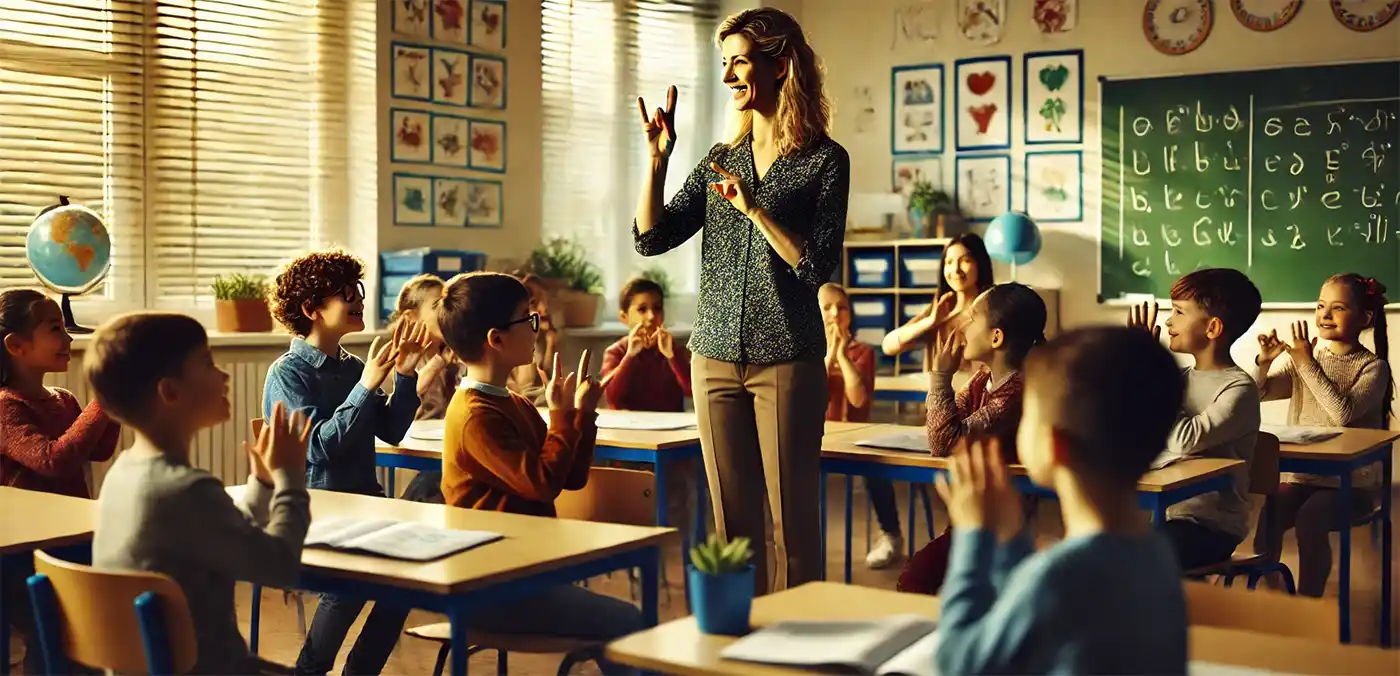A Celebration of Diversity in Communication
Each year on September 23rd, the world comes together to celebrate the International Day of Sign Languages (IDSL), a global observance dedicated to the unique beauty and cultural significance of sign languages. This day highlights the importance of linguistic diversity and the rights of deaf people to use sign language as a fundamental means of communication. Sign languages are rich, vibrant, and complex systems that allow the Deaf and hard-of-hearing communities to express themselves fully and interact with the world.
The Origins and Purpose of International Day of Sign Languages
The International Day of Sign Languages was first observed in 2018, marking the anniversary of the founding of the World Federation of the Deaf (WFD) in 1951. This organization, which represents over 70 million deaf people worldwide, has long advocated for the promotion and protection of sign languages. September 23rd was chosen as the official day to raise awareness of the need to recognize and protect the linguistic rights of deaf individuals.
This day forms a key part of the broader International Week of the Deaf, which has been celebrated since 1958. The International Day of Sign Languages, in particular, aims to foster the growth of sign languages, support deaf communities, and encourage everyone—whether they are hearing or deaf—to recognize the value of these languages in creating an inclusive world.
What is Sign Language?
Sign language is not a single, universal form of communication. Rather, it is a group of fully-fledged natural languages, each with its own grammar, vocabulary, and regional variations. Just as spoken languages differ from country to country, so do sign languages. For example, American Sign Language (ASL) is entirely different from British Sign Language (BSL) or French Sign Language (LSF). These differences can be as vast as those between English, Mandarin, and Swahili.
 Despite these variations, all sign languages share a few common features: they are primarily visual, relying on gestures, facial expressions, body movement, and spatial orientation to convey meaning. The hands, face, and upper body play crucial roles in sign communication, allowing signers to articulate abstract ideas, emotions, and detailed concepts just as thoroughly as spoken languages.
Despite these variations, all sign languages share a few common features: they are primarily visual, relying on gestures, facial expressions, body movement, and spatial orientation to convey meaning. The hands, face, and upper body play crucial roles in sign communication, allowing signers to articulate abstract ideas, emotions, and detailed concepts just as thoroughly as spoken languages.
The Importance of Recognizing and Protecting Sign Languages
For many Deaf individuals, sign language is their primary and often preferred mode of communication. It’s not just a way to communicate; it’s an integral part of their cultural identity. Just as spoken languages are central to the culture and heritage of hearing people, sign languages hold the same significance for deaf communities. In fact, sign languages are the bedrock of Deaf culture, which is distinct from the culture of the hearing world.
Unfortunately, for much of history, sign languages were marginalized, and deaf individuals were often pressured to learn spoken languages through methods like oralism, which emphasized lip-reading and speech. In some cases, the use of sign language was actively discouraged or banned, particularly in educational settings. This led to a long struggle for recognition and acceptance of sign languages as legitimate, natural languages.
In the modern era, much progress has been made. Many countries have recognized their national sign languages, and deaf individuals are increasingly gaining the rights to education, employment, and public services in their preferred language. However, challenges remain, and International Day of Sign Languages is a key platform for continuing the advocacy needed to secure full equality and accessibility for the Deaf community.
Different Sign Languages Around the World
One of the most fascinating aspects of sign languages is their diversity. Contrary to the misconception that sign language is universal, each country—or even region—has its own version, shaped by history, geography, and cultural norms. Here are just a few examples of widely used sign languages:
- American Sign Language (ASL): One of the most commonly known sign languages globally, ASL is used by about 500,000 people in the United States and parts of Canada. It has its roots in French Sign Language and has developed into a rich language with its own grammar and vocabulary. Interestingly, ASL shares little similarity with British Sign Language, despite both being used in English-speaking countries.
- British Sign Language (BSL): Used by tens of thousands of people in the UK, BSL differs significantly from ASL. The manual alphabet, grammar, and signs themselves are distinct, making cross-communication between ASL and BSL signers difficult without learning each other’s language.
- French Sign Language (LSF): As one of the oldest documented sign languages, French Sign Language has had a profound influence on many modern sign languages, including ASL. It continues to be the primary sign language of France’s Deaf community.
- Chinese Sign Language (CSL): Used in various forms across China, CSL reflects the linguistic and cultural diversity of the country. Its use is widespread, though challenges remain in terms of formal recognition and education in CSL.
- International Sign (IS): While not a full language like ASL or BSL, International Sign is a form of communication used at global Deaf events like the World Federation of the Deaf’s congresses. It’s a pidgin-like system that borrows elements from various sign languages, allowing for basic understanding across different linguistic backgrounds.

The Role of Sign Language in Education and Society
One of the most critical issues surrounding sign languages is their role in education. Historically, many Deaf children were educated using oral methods that prioritized speech and lip-reading over sign language, often with detrimental effects on their ability to fully engage with learning. Today, advocates for deaf education emphasize the importance of bilingual approaches, where children are taught in both a national sign language and the written/spoken language of their country.
This approach helps ensure that Deaf students can develop language fluency early, allowing them to access broader academic opportunities and fully participate in society. Countries that have officially recognized their national sign languages—such as New Zealand, Sweden, and South Africa—have seen more inclusive educational models that benefit both deaf students and their families.
Outside of the classroom, sign languages play an essential role in public life. From government services to media, there has been a growing push for greater accessibility. The rise of sign language interpreters on television, during public events, and in healthcare settings has expanded the visibility of sign language and improved access for Deaf individuals.
How You Can Participate in International Day of Sign Languages
- Learn Some Basic Signs – Even if you aren’t fluent in sign language, taking the time to learn a few basic signs can make a big difference in communicating with the Deaf community. Start with simple greetings, thank you, or even learn how to fingerspell your name. ASL and BSL have many online resources, and there are apps available for learning on the go.
- Support Deaf Businesses and Artists – The Deaf community has a rich cultural heritage, including art, theater, and business. Consider supporting deaf-owned businesses or attending a Deaf performance, such as a signed play or concert. These opportunities not only celebrate the culture but also promote greater inclusion.
- Advocate for Accessibility – Whether it’s at work, in public spaces, or online, consider how accessible your environment is to Deaf individuals. Advocating for captioned videos, sign language interpreters at events, and accessible customer service options can help make a world of difference.
- Spread Awareness – Use social media to help raise awareness of the importance of sign language. Share facts, resources, and stories from the Deaf community to educate others about the importance of linguistic diversity and inclusion.
International Day of Sign Languages is about more than just language; it’s about recognizing the rights, culture, and contributions of the Deaf community. Sign language is a vital part of human diversity, and the celebration of its use and promotion is essential in fostering a more inclusive world. Whether you know a few signs or are fluent, this day is an opportunity to appreciate the depth, complexity, and beauty of sign language and support the communities who use it every day.
Please Share our Content






 Despite these variations, all sign languages share a few common features: they are primarily visual, relying on gestures, facial expressions, body movement, and spatial orientation to convey meaning. The hands, face, and upper body play crucial roles in sign communication, allowing signers to articulate abstract ideas, emotions, and detailed concepts just as thoroughly as spoken languages.
Despite these variations, all sign languages share a few common features: they are primarily visual, relying on gestures, facial expressions, body movement, and spatial orientation to convey meaning. The hands, face, and upper body play crucial roles in sign communication, allowing signers to articulate abstract ideas, emotions, and detailed concepts just as thoroughly as spoken languages.









 "Sláinte!" is a traditional Irish expression used as a toast, equivalent to "Cheers!" in English.
"Sláinte!" is a traditional Irish expression used as a toast, equivalent to "Cheers!" in English.